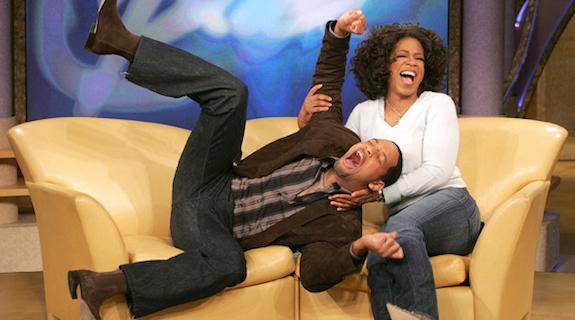“Even though 70 percent of mothers and 93 percent of fathers have jobs, Americans’ attitudes about working parents — mothers as caregivers, fathers as breadwinners — have been remarkably slow to change.” – Claire Cain Miller, “Signs of a Truce in the Mommy Wars,” New York Times, December 10, 2015
Perhaps nowhere is this reluctance to reflect cultural changes more apparent than in daytime television. But it wasn’t always that way. Back in the 1950s, when television began its rapid rise to cultural dominance, a wife who stayed at home all day while her husband worked was the sign of upward mobility. Daytime TV was her companion, her validation and her primary source of understanding the outside world. In the post-war era, daytime TV was a lifeline for the suburban housewife and importantly, a marker of cultural relevance.

Almost 70 years later, the economic power of women is at full tilt, with females comprising 40 percent of breadwinners, according to some estimates. But looking at the daytime landscape, it seems this massive societal shift has outpaced the creative evolution of daytime television – still very much in “service” mode, mostly serving as background and companionship for a dwindling number of housewives. Add to that the variety of digital options providing anywhere/anytime content, along with Millennial cord-cutting, and it’s not surprising that the daypart is severely challenged.
Like all of linear television, ratings are soft in daytime, and the composition of viewers increasingly reflects that socioeconomic shift: older, more downscale, more ethnic, less disposable income. The ad-friendly available audience itself is becoming an endangered species between the hours of 9am – 5pm.
Perhaps the daytime decline stings more because the competition has grown beyond the daypart itself. Viewers with access to DVRs, on demand and OTT services such as Netflix and Amazon can choose from soapy storylines of primetime fare like Scandal, The Affair and Game of Thrones in the middle of the afternoon, instead of the plethora of panel shows, dysfunction and wise-cracky judges currently populating the screen. Reality TV has also provided the melodrama, crazy characters and outlandish behavior that were formerly the staples of the daytime soap. It wouldn’t surprise me to see a long-lost twin or someone we thought was dead pop up as a Real Housewife of somewhere, sometime.
Conversely, a show like Ellen essentially serves up a late-night experience, with the same sort of celebrity sit-downs, fun and games that make The Tonight Show with Jimmy Fallon a fun way to end the day. And our recent Late Night Talk study found that “Late Night” is better used as a descriptor of a sensibility (subversive, playful, performative) than an actual viewing time, with many people watching the show or its clips as the sun rises or well before the sun goes down.

So, with DVR penetration estimated at almost half of the television-viewing population today, is the point of dayparts meaningless? And if so, what does that mean for networks and studios producing daily content for this once-dependable genre, and perhaps most importantly, for the TV stations that still need to fill their daytime hours with these types of shows?
From a cultural perspective, it’s time for programmers to let go of daytime conventions and try new things. Personally, I’d like to see daytime TV become more adventurous, try new formats and expose viewers to talent that’s never been considered appropriate under the old paradigm. With more and more people time-shifting and binge viewing, why couldn’t a daytime show be as DVR-worthy as a primetime one?
What’s clear in the new world of television is that while viewers have plenty of quality TV from which to choose, they don’t want more of the same. To survive and thrive in the new era, daytime TV needs to either identify and embrace its current audience, or provide exciting new kinds of content that its old audience will seek out to watch.

TruthCo. is a cultural branding and insights company, headed by CEO Linda Ong, that analyzes the current cultural landscape to deliver actionable recommendations that keep entertainment brands and their offerings relevant.
Tags:













































__twocolumncontent.jpg)











